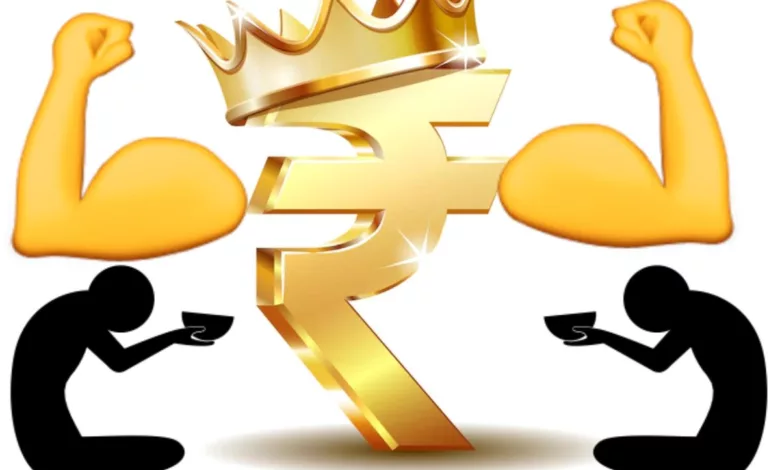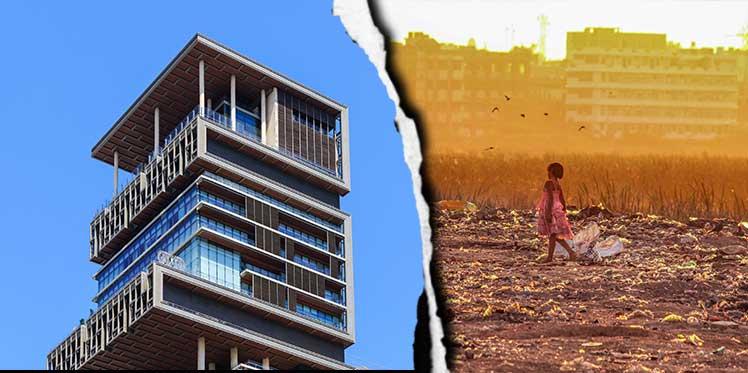India must combat inequality with its fiscal weapon.

The Oxfam 2023 research entitled Survival of the Richest has raised some eyebrows. There is indignation from predictable sources who claim that it denigrates India by exaggerating its inequalities and poverty. The report is also being attacked for using the incorrect technique to calculate taxpayer tax burdens. For instance, one result of the study is that roughly two-thirds of the goods and services tax is paid by India’s lowest income earners (GST).
Because it hits the underprivileged harder than the wealthy, this tax is indirect and by definition regressive. This is because the GST paid is based on the product’s price, not the payer’s income. Naturally, it affects India’s poor more severely as a percentage of income.
However, because they consume more and spend more money on their purchases, the rich should receive a disproportionately larger percentage of the GST collected. Therefore, it is unpleasant to see that the lower half of the Indian population is spending higher than the top half.
Why did Oxfam reach this peculiar conclusion about India?
To its honor, it is open about the limitations of the data availability as well as its methods. Since 2011–2012, India has not gathered comprehensive survey-based information on consumer spending. Since the analysis uses the current GST rate on an older customer base (for every decile), its conclusion may have been compromised.
Opponents argue that Oxfam is mistaken and that the recent increase in GST collections may not be attributable to the poor getting pinched but rather to wealthy consumers’ steadfast need for luxury items.
However, this supports Oxfam’s main argument concerning growing inequality. We are currently in the third year of our K-shaped recovery, and there are no signs of a slowdown. Not only are indirect taxes like GST a hardship on the poor, but high gasoline and diesel excise taxes also have an inflationary effect. For the past three years, the average inflation rate has been above 6%, although it is higher for commodities like milk, eggs, wheat, and flour. It is outpacing the pay increase.
According to Oxfam, a higher rise in inflation has undermined wage growth for 1.7 billion people globally, leaving them substantially poorer. According to the World Bank’s 2022 study on Poverty and Shared Prosperity, the majority of the additional 70 million people who fell into poverty by the end of 2020 were living in India. So, not only has inequality increased, but also poverty.
Due to a lack of information on consumer spending for the previous 11 years, there was no official count of poverty in India. However, the multi-dimensional index used in Niti Aayog‘s poverty report still indicates a mean of double-digit poverty. There may be a tonne of evidence that supports Oxfam’s pessimistic assessment of inequality. India now has 166 billionaires, an increase of 102 from just two years ago.

Mercedes-Benz recorded a reported growth of 41% from 2022 to 2023. The market for opulent goods and services has been increasing. India’s stock market increased by 4.6% despite the Nasdaq’s 34% decline and the S&P 500’s 20% decline. According to Oxfam, the combined wealth of the top 100 Indian billionaires is $660 billion, with the top 1% currently owning 40% of the total.
The unavoidable result of rapid financial advancement is inequality. The winners—innovators, daring businesspeople, and gifted individuals—charge ahead, produce money, and make disproportionately advantageous properties. Additionally, they avoided many of the advantages of rapid national revenue growth.
Those who were left behind might gain from a trickle-down effect. But what if the majority simply experiences economic and employment stagnation? Excessive disparity eventually leads to tensions, societal unrest, and investment apprehension, all of which are harmful to advancement. As a result, an antidote is needed.
Financial protection is unfortunately of little benefit. As I noted in a previous piece of mine, dated October 20, 2020, the free financial policies implemented since 2008 and during covid also increased inequality. Only those who are involved in shares, which in India is less than 3% of the population, benefit from hovering stock market indices, which are partially made possible by the inflow of cash from central banks.
Therefore, one approaches fiscal coverage to alleviate inequality. This can be done through spending on public goods whose benefits mostly benefit the poor or by redistributing tax revenue.
The Union budget for the following week is the last one before the 2024 general elections. It might be the last opportunity the federal government has to embrace populism or increase spending to win over the public. The pantry has made it possible to extend another year to the 30-month free foodgrain program.
There may be a discussion about adding $2,000 to the free basic income provided to all farmer households. The program to guarantee agricultural employment might receive a better allocation. All of those do help to lessen poverty and inequality, but more is needed. We should focus on ensuring the launch and survival of thousands of small and medium-sized businesses each year because this is where many of the jobs are.
The close to $10 trillion in excellent cash attributable to MSMEs is a significant roadblock to their development and survival. The TReDS system is an attempt to advertise excellent unpaid invoices of small businesses, however, it is ineffective. Because of ability mismatches, there is both a labor shortage for expert positions and a shortage of available employment.

The last call.
Perhaps 200 million children have lost two years of their education due to the pandemic. The area where financial action is necessary is there. Increased infrastructure, education, and health spending shouldn’t neglect affluent taxpayers’ tax revenue opportunities. Additionally, we want to increase the proportion of direct taxes in the overall budget while reducing the burden of indirect taxes.
edited and proofread by nikita sharma






